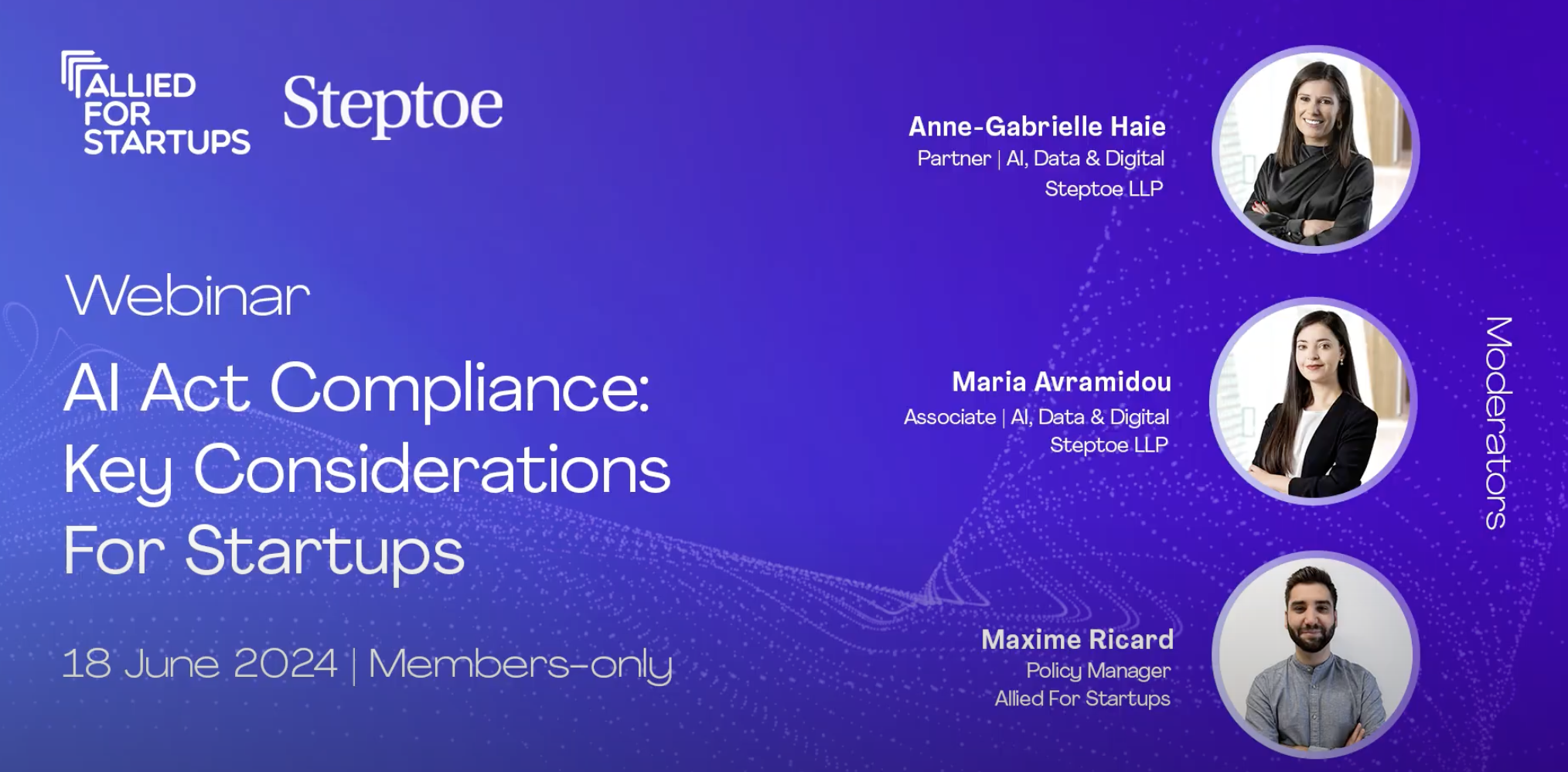AI Act Compliance: Key Considerations For Startups (Steptoe)
Presentation by Anne Gabrielle Haie, Partner at Steptoe & Maria Avramidou, Associate at Steptoe.
Recorded June 18, 2024.

Link to video recording (Google Drive): https://drive.google.com/file/d/1VHb2hrFdV792WpnuDMTyOqnaux9l6Ov3/
Agenda
1. Create an inventory of your AI systems/models and assess whether they fall within the scope of the EU AI Act
2. Classify your AI systems/models
3. Identify your role for each AI system/model
4. Map your obligations for each AI system/model
5. Identify any regulatory overlaps
6. Prepare an inventory of existing documentation and processes, and conduct a gap analysis
7. Identify your internal resources and needs
8. Prepare a roadmap and allocate responsibilities
9. Monitor regulatory developments
10. Get involved in regulatory sandboxes, codes of practice, code of conduct & standardisation
Presentation PDF: https://drive.google.com/file/d/11KW5oD-vnvQhpf9G7CqQYCtvVc-yzQ8z/view
Brief summary and abstract
Introduction to the EU AI Act:
Overview of the purpose and scope of the EU AI Act.
The importance of ensuring compliance for companies operating within the EU.
Key Requirements and Obligations:
Definition of high-risk AI systems and their classification.
Mandatory requirements for high-risk AI systems, including risk management, data governance, and technical documentation.
Transparency obligations for AI systems interacting with humans, such as chatbots and AI decision-making systems.
Conformity Assessment:
Description of the conformity assessment procedures that organizations must follow.
Self-assessment for low-risk AI systems and third-party assessment for high-risk AI systems.
Obligations of Providers and Users:
Responsibilities of AI system providers, including ensuring compliance and maintaining documentation.
User obligations, particularly for those deploying high-risk AI systems in critical areas like healthcare and transportation.
Monitoring and Enforcement:
Role of national supervisory authorities in monitoring compliance.
Penalties and fines for non-compliance, highlighting the importance of adhering to the Act.
Implementation Timeline:
Key dates and deadlines for implementation.
Steps organizations should take to prepare for compliance, including conducting impact assessments and updating internal policies.
Best Practices for Compliance:
Recommendations for organizations to achieve and maintain compliance.
Importance of ongoing monitoring and updating of AI systems to meet evolving regulations.
Q&A Session:
Addressing common questions and concerns about the EU AI Act.
Clarification of specific scenarios and compliance strategies.